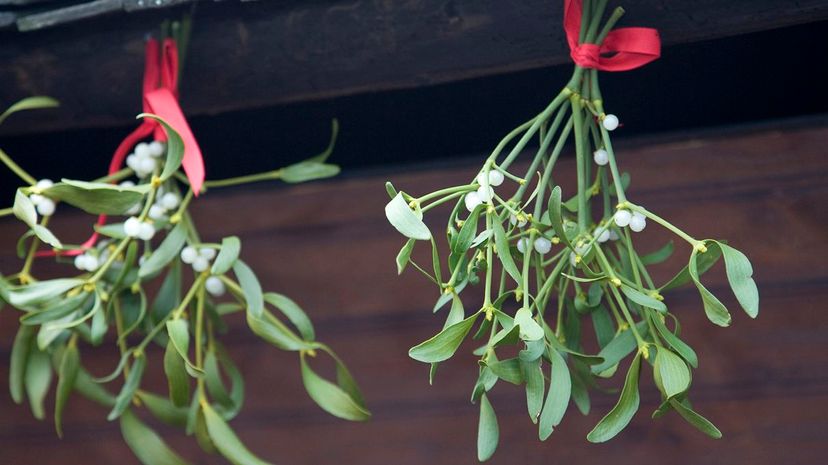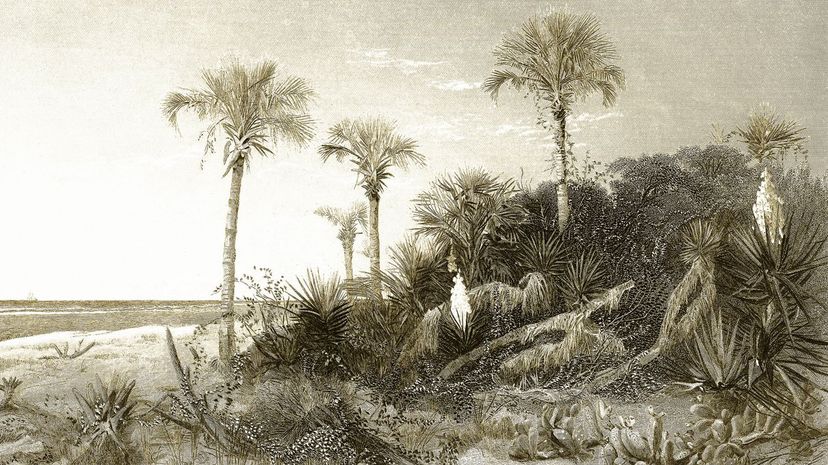
About This Quiz
Christmas is a time when traditions of the past are celebrated widely and with gusto - even if we aren't 100% sure how they started in the first place. For instance, many of us will decorate a tree or send out Christmas cards because it's something we enjoy doing, but do you know when and where the tradition first started? Some Christmas origin stories are so bizarre you'd swear they were fake (until you delve deeper into the subject). Other traditions from the past are so mundane you might have a hard time believing they're still around, even though you practice them every December.
Do you think you'll be able to tell whether a Christmas tradition from the past is real or fake? We're going to go back to the time of the Druids and Vikings (before Christmas as we know it today even existed!) and work our way to the mid-aughts - a time when certain traditions were experiencing their brand new beginnings. You'll need to put on your critical thinking Santa hat to answer these questions correctly because you're about to take a trip back in time, back to when historical Christmas traditions were merely new ideas.
We're going to learn what's real and what isn't about the way we celebrate Christmas today. Think you're up for the challenge? Ho ho ho, let's go!

Although it would be an especially festive if it were true, the story of Rudolph the Red-Nosed Reindeer was made up by a copywriter named Robert L. May in 1939. The department store Montgomery Ward was tired of the financial loss it experienced every year when it bought and then gave away Christmas-themed coloring books. Hence, the invention of Rudolph the Red-Nosed Reindeer - a character that was invented and owned by the store.

The oldest Christmas carol is thought to be "Good Christian Men, Rejoice," a traditional song dating all the way back to the Middle Ages (in other words, much later than 1927). The carol was originally written in Latin by a Dominican friar and was titled "In Dulci Jubilo," which translates to "in sweet rejoicing."

In terms of Christmas traditions, sending and receiving cards is a fairly new one. The first thousand cards were printed in England in 1843 and featured a group of merrymakers toasting each other and saying "A Merry Christmas and a Happy New Year to you" (and they only cost a penny to send!).
Advertisement

Unless you were getting married or attending a wedding on the actual holiday, the chances of finding cans tied to your car on Christmas were pretty much slim to none. If it was your actual wedding day, the shoes would usually be accompanied by ribbons, streamers and a "Just Married" sign - nowadays, people add balloons, LED lights and flowers.

First, it was dried peas in the 1300s and then, centuries later, it turned into Silver Farthings and eventually the fivepence coin that is commonly used today. Finding the coin in the Christmas pudding was considered a sign of good fortune - and in some cases meant the lucky individual would become king or queen for the day!

It wasn't only the Celtic Druids who were interested in mistletoe; the indigenous peoples of North America and Norse Vikings also held this plant in high esteem. Mistletoe was popular because it stayed green and grew berries even as other plants died during the winter months - it was also used to protect against evil, cure infertility and prevent diseases of the nervous system.
Advertisement

In order to find the origins of "O Come, All Ye Faithful" you'll need to rewind half a century, back to the 1600s. A far cry from television specials from the 1960s, the original melody and lyrics have royal origins - they were likely composed with the help of Portugal's King John IV.

It's hard to believe now, but during the mid-1600s, Oliver Cromwell and members of the Puritan religious movement banned Christmas celebrations because they distracted from the true meaning of the holiest day of the year. It wasn't until the Restoration Period that Christmas celebrations were once again restored.

Have you ever tried to fasten lit candles to a Christmas tree without worrying about it? It turns out no-one has ever felt this relaxed around live flames and dry coniferous trees. In the past, a bucket of water or sand was kept handy at all times - fires were so common they became known risks if someone was attempting to take out an insurance policy.
Advertisement

Charles Dickens definitely lived in an era when decorating the Christmas tree was the norm, but he was hardly the first person to do it. During the 16th century, German Protestant Martin Luther first began decorating trees after feeling inspired by the way the night sky looked shimmering through the branches of a fir tree.

There are several ancient pagan festivities which suggest the darkest months of winter have historically been a time of mirth and celebration. For example, the Kalends, Saturnalia (depicted here) and Deus Sol Invictus are all holidays having to do with light and rebirth dating before the birth of Christ.

Actual yule logs have been a part of the winter solstice celebration for centuries thanks to their purported cleansing properties and protective powers. In the 1800s, Parisienne bakers began to make yule logs out of cake, topping them with icing and meringue decorations.
Advertisement

Early Coca-Cola ads from the 1920s depicted Santa Claus as a stern man wearing a Santa costume. In 1931, Haddon Sundblom was commissioned by Coca-Cola to create a new, jollier version of an actual St. Nick for a new advertising campaign in "The Saturday Evening Post."

Historians don't have a definite answer as to how Christmas stockings became a regular tradition, but they're pretty sure Saint Nicholas had a major part in its formation. One popular story depicts Saint Nicholas throwing three bags of gold through a window, the third landing directly into a lucky individual's stocking.

In the 1900s, candy canes went from all-white and completely straight to curved with red stripes. The shape of the candy cane represents Jesus' shepherd's crook and the colors symbolize Christ's sacrifice and blood (red) and purity (white). Of course, today's multicolored candy canes are designed for their aesthetics, not their ties to religious imagery.
Advertisement

Despite today's prevailing obsession with egg nog once December rolls around, the traditional holiday beverage first appeared during the medieval era. Instead of egg nog, the drink was referred to as a "posset" and was made from eggs, milk and figs - ingredients that made the holiday beverage a treat for the wealthy.

It's 100% true the song "Jingle Bells" was written about a different holiday, but the holiday it was intended for was Thanksgiving. James Lord Pierpont wrote the song in 1857 based in his experience traveling for Thanksgiving and was first called "One Horse Open Sleigh."

The spying elf is a completely real tradition! The book "Elf on the Shelf: A Christmas Tradition" was written by Carol Aebersold and Chanda Bell in 2005, leading to hundreds of thousands of Elf on the Shelf stuffed figurines finding their way into American bookshelves, kitchen drawers, nightstands, bathtubs and any other place you can perch an Elf!
Advertisement

The first fake Christmas trees were, in fact, made in the 19th century from goose feathers that had been dyed green. Why go the artificial route? The trees were originally made in response to the continued deforestation of Germany but continued to grow in popularity and availability across Europe and North America.

Advent calendars first were invented by Lutherans in Germany during the early 1880s, although they're a far cry from the advent calendars of today. The more familiar, commercial advent calendar was first printed and mass-produced in 1908 by a printing office in Munich, Germany.

While the Christmas tree at Rockefeller Plaza is undeniably impressive, the actual Nation's Christmas Tree (as pronounced by President Calvin Coolidge) can be found in California King's National Park in California and is over 1,600 years old and stands at an impressive 300 feet tall.
Advertisement

Teddy Roosevelt was the first and only president to ban, not erect, Christmas trees in the White House for environmental reasons. The 14th president of the United States, Franklin Pierce, was actually the first president to bring a Christmas tree into the White House in 1856.

Today's casual kiss under the mistletoe is tame compared to the commitment it meant in ancient Greece and Rome! Mistletoe was an important part of Saturnalia (a celebration that is considered a precursor to Christmas), and it represented fertility and prosperity in marriage.

Santa Claus first started finding treats beside the Christmas tree during the Great Depression. In the midst of extreme economic turmoil, parents in the United States asked their children to leave something for Santa and his reindeer in order to teach the importance of gratitude at Christmas time.
Advertisement

As it turns out, traditional Christmas ornaments weren't inspired by tropical fruits - they're inspired by apples! Historically, apples have been used to decorate Christmas trees because of their connection to the Bible and the Garden of Eden.

Before King Edward VII popularized the turkey dinner on Christmas day it was customary to enjoy roast pheasant, swan and peacock. If you were a particularly lucky individual, you might even find yourself with a roast boar's head that had been decorated with fruit and boughs of holly.

The first decorated Christmas tree in North America is said to have been introduced in the province of Quebec by the Baroness von Riedesel in 1781. Her and her husband, General Friedrich Adolf Riedesel, displayed a fir tree that had been decorated with fruit and candles for their military guests during the Christmas season.
Advertisement

While it's true that American inventor Ralph Morris based his idea for electric Christmas lights on a telephone switchboard in 1908, it was actually an associate of Thomas Edison's who was responsible for the first Christmas tree to be lit up using electricity. In 1882, Edward Johnson used electricity to light up the very first Christmas tree for the very first time!

England's Queen Elizabeth I had the original idea to turn gingerbread into lifelike figurines (the likeness of her royal guests, to be exact). Regular gingerbread is older than its figure-shaped, cut-out version - recipes have been found dating all the way back to the 15th century.

You might find it hard to come across 12 consecutive viewings of the "The Nightmare Before Christmas," but you can for sure watch "A Christmas Story" in marathon mode! Beginning in 1997 on TNT (and now showing on TBS), the movie "A Christmas Story" is played 12 times in a row annually for an audience of 50 million viewers.
Advertisement

This is one holiday fact that's completely true! The state of Alabama was first to pronounce Christmas a holiday in 1836 (Oklahoma, the last state to declare Christmas a national holiday, didn't catch up until 1907).

No one knew how to bring the holiday party from house to house like the Victorians! Caroling was an all-year activity if you were alive during the time of Queen Victoria's reign, and every holiday was an occasion to spread good cheer (carols eventually became a Christmas-only event as the holiday became more commercialized).

Tinsel was invented in 1610 by a German inventor who based the silvery decorations on a story about a spider's web that turned into silver when it was made into a Christmas tree. This isn't the only spider-themed Christmas tradition from the past; in Polish legends, it was a spider that made a beautiful spun blanket for the Baby Jesus.
Advertisement

During the Roman Empire, early pagans considered evergreen boughs, not palm trees, to be symbolic of eternal life and rebirth. The imagery of the evergreen bough is still an important part of modern-day Christmas celebrations - wreaths, mistletoe, garlands and Christmas trees are all reminders of this ancient tradition.

This Christmas tradition is completely fake! While the Victorian elite (and non-elite) might have enjoyed some outdoor skating on Christmas day, downhill skiing had yet to become a popular outdoor activity. In fact, we had to wait until the 1950s before skiing became accessible to the masses!